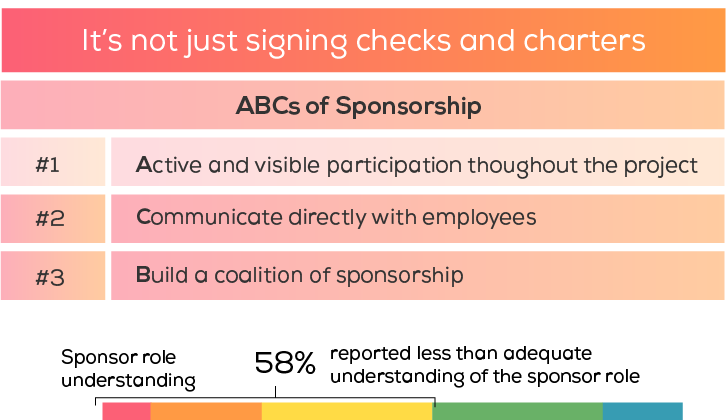
Change Management: Guess #1 Predictor of Success or Failure
Why Change Management Fails (or Succeeds)
Change is inevitable in any organization, but successful change requires structured management. According to Prosci’s Best Practices in Change Management Report, projects with excellent change management are six times more likely to meet objectives than those with poor change management. The ability to manage change effectively directly correlates with an organization’s long-term success.
The Role of an Executive Sponsor
A study by McKinsey & Co. found that projects with strong executive sponsorship are 70% more likely to succeed. Change initiatives fail when leaders don’t champion the transformation. The role of an executive sponsor is to set expectations, secure resources, and communicate the benefits of the change. Without a visible and engaged sponsor, employees are less likely to adopt the new processes or systems.
Common Pitfalls in Change Management
- Lack of senior leadership support – Employees follow leaders who set clear expectations.
- Inadequate communication – Without clarity, resistance grows.
- Failure to address employee concerns – If workers don’t buy in, change collapses.
- Short-term thinking – Organizations must plan beyond initial implementation.
- Not measuring success – Without tracking results, change efforts fizzle out.
Real-World Example: Nokia vs. Apple
Nokia’s decline in the smartphone market is a classic case of poor change management. Despite knowing about the shift to touchscreens, Nokia’s leadership failed to adapt, while Apple thrived with strong executive backing. Nokia’s inability to embrace change and execute transformation strategies effectively led to its downfall.
Best Practices for Change Management Success:
- Strong leadership sponsorship
- Early stakeholder engagement
- Clear communication of benefits
- Training & continuous support
- Measurable feedback mechanisms
- Change champions within teams
Successful change management is not just about planning—it’s about execution, buy-in, and consistent reinforcement.

